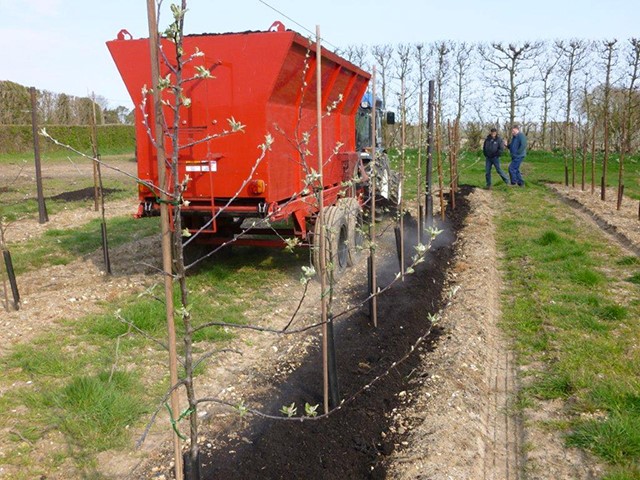Organic Amendments and Fertilizer Spreaders
Farmers around the world have always known the benefits of manures, composts, leaf and yard waste; and other bulky organic materials, and the fertilizer spreaders to deliver them. With more emphasis on sustainability and recycling; reducing the use of costly chemical fertilizers, and managing the organic fraction of the soil better; advancements in the ‘science’ of it all have kept pace to assist farmers while equipment technology also has become more precise for field and operating efficiency.
Sources of Bulky Organics:
Fresh Animal Manures – small and medium-size farms where storage opportunities are limited rely on spreading their fresh manure frequently. Daily spreading was once the most common method and still is a very often used system, particularly on dairy farms using stanchion or tie stalls to house their cattle. In these systems, the most common form of fertilizer spreaders is the beater spreader; but they are not as precise, and are designed to spread quickly. As a result, the rate of application is high, and the spread pattern limited; leading to nutrient accumulation in the soil beyond what the crop system needs and subjecting the system to environmental loss from runoff and leaching of nutrients (primarily phosphorus runoff, and nitrogen leaching).
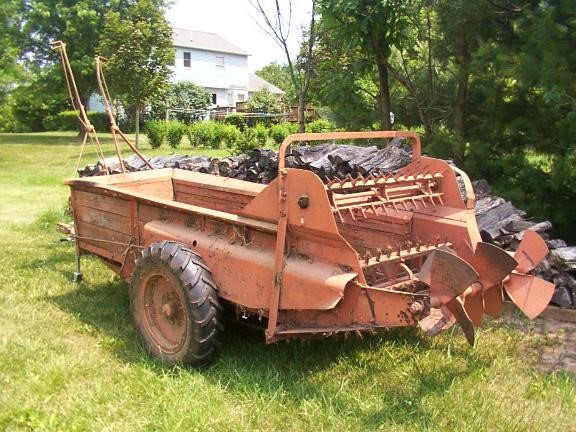
Original beater spreader – the original mechanical manure spreader was designed to get rid of the manure and get back to the house for your morning coffee. Ground driven floor based mechanisms, combined with PTO driven beaters did the job. They were built to last for many years with a minimum amount of maintenance.
Bedded Manure Storages – farmers who use a lot of bedding and some sources which are not too high in moisture will static pile their manure for spreading when soil conditions are dry enough, or at times of the year more practical for their situation. During the time that bedded manure is stored, it undergoes biological, chemical, and physical breakdown. This ‘shrink’ changes the density and relative nutrient content of the manure in different ways. Density is increased, phosphorus and other relatively insoluble elements accumulate in higher concentrations; nitrogen is converted to nitrate; and the carbon in the manure and bedding is converted, tied up as related compounds, or digested by microbes. The result is a material that has been partially or completely composted, depending on factors like turning the pile, age of the pile, and condition of the originating manure. If spread at the same rate as you’d spread fresh manure, nutrient loading is increased. This is great for infertile fields that need carbon, phosphorus, and other relatively insoluble elements are short; but it is wasteful and pollutive on fields that have these elements in excessive concentrations.
Composts – composting has gained momentum in recent decades. If you conscientiously become ‘involved’ in the breakdown of organic wastes, whether turning often, covering, mixing different sources of waste in a precise manner, separating manure solids, or many of the other ways to ‘manage’ waste; your end product has a different makeup. It’s usually of higher quality nutrient wise, has lower populations of anaerobic and toxic bacteria, and a lower weed content. In order to get there, you’ve invested time and money; and hence, need to receive some return; whether agronomically or economically. Spreader technology for this type of material is in high demand these days. Farmers who are growing using ‘organic’ systems have a high demand.
Types of Fertilizer Spreaders
The type of spreader is usually designed for its intended use and can be categorized as dry, semi-solid, and liquid. The precision and placement of the material varies with the engineering used to build it.
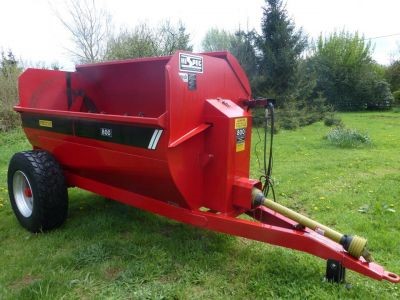
Side delivery beater spreaders have the beaters inside the storage drum and the rate is controlled by a door that is hydraulically controlled. They allowed the farmer to increase the width of the spread pattern which enabled thinning out the rate of application somewhat, but they’re essentially no different than the rear beater spreader in preciseness. When first introduced on the market, their biggest advantage was how fast you could get rid of the load.
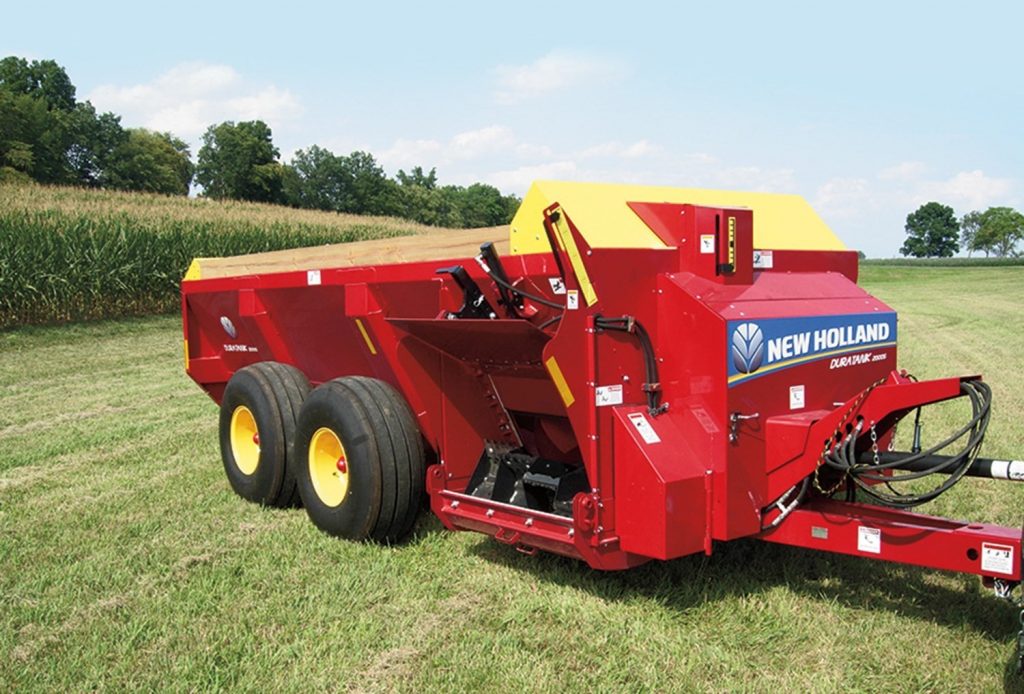
The side delivery technology shown here went a long way to advancing precision and versatility in manure spreaders. This was particularly applicable in systems that have different types of manure from nearly liquid to bedded pack. The ideal manure for this type of spreader was free-stall manure or manure being spread fresh.. High in moisture, low in bedding. The side delivery gate and beater configuration allows for the widest spread pattern across the field depending on the material’s water content. 20’ patterns are not unusual, but as the amount of bulk and bedding increases, the door must be opened wider to allow for discharge, so the rate goes up and accuracy suffers. Source: New Holland Duratank Spreaders
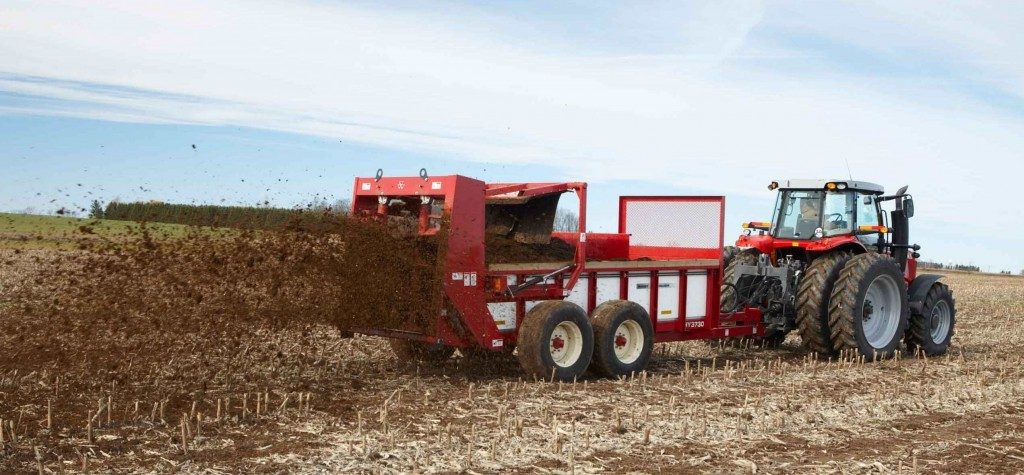
Perhaps one of the most significant advancements in the last several years in semi-solid manure spreading is the vertical beater. The material travels by way of a push wall that moves the entire load to the rear and beaters that have a significantly wider spreading pattern than horizontal beaters offered. This means less compaction to the field, more precise application, and a faster cleanout of material. Source: New Holland Hydro-Box Spreader – Messick Farm Equipment
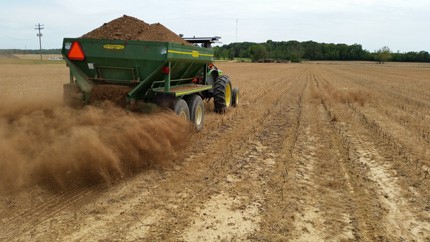
When spreading dry compost or poultry litter, developments of lime and gypsum spreaders have enabled a reasonably precise application but moisture content is key because even with ‘wet lime’ spreaders, the material will bridge in the delivery mechanism.
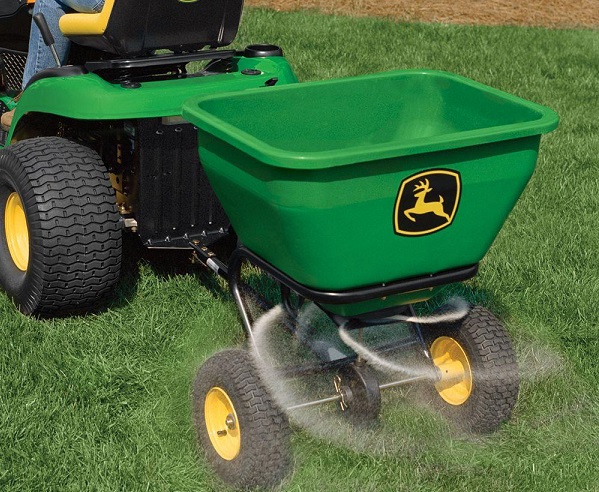
Small farms, turf managers, landscapers, and others are utilizing more pull-behind and walk-behind types of spreaders like this one. Precise application with fairly good distribution can be achieved with the right material.
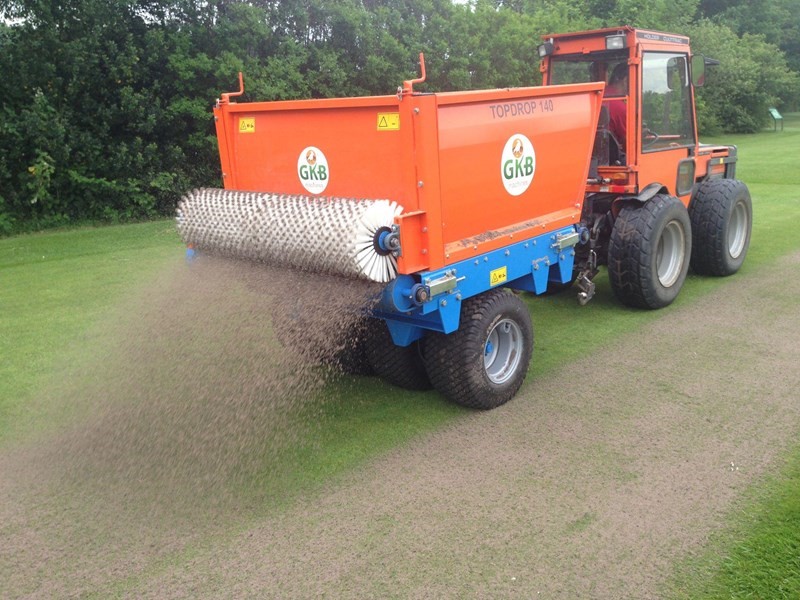
Brush Spreaders are commonly used on golf courses but are gaining popularity where precise rates of relatively dry and screened compost needs to be spread over turf. The technology here that is most applicable to spreading well-processed compost is combining a belted traveling floor delivering a consistent rate, then spread and distributed into the turf by an actively turning heavy-duty brush. In this picture, they’re spreading sand onto the turf, but the concept is very similar to if they were spreading organics.
By: John Deibel
Read more about it:
Meristem Land and Science – New manure spreaders prove more crop production friendly
Google Images – Types of Manure Spreaders
If you think this article could be useful for your friends and colleagues please share it on Facebook.


